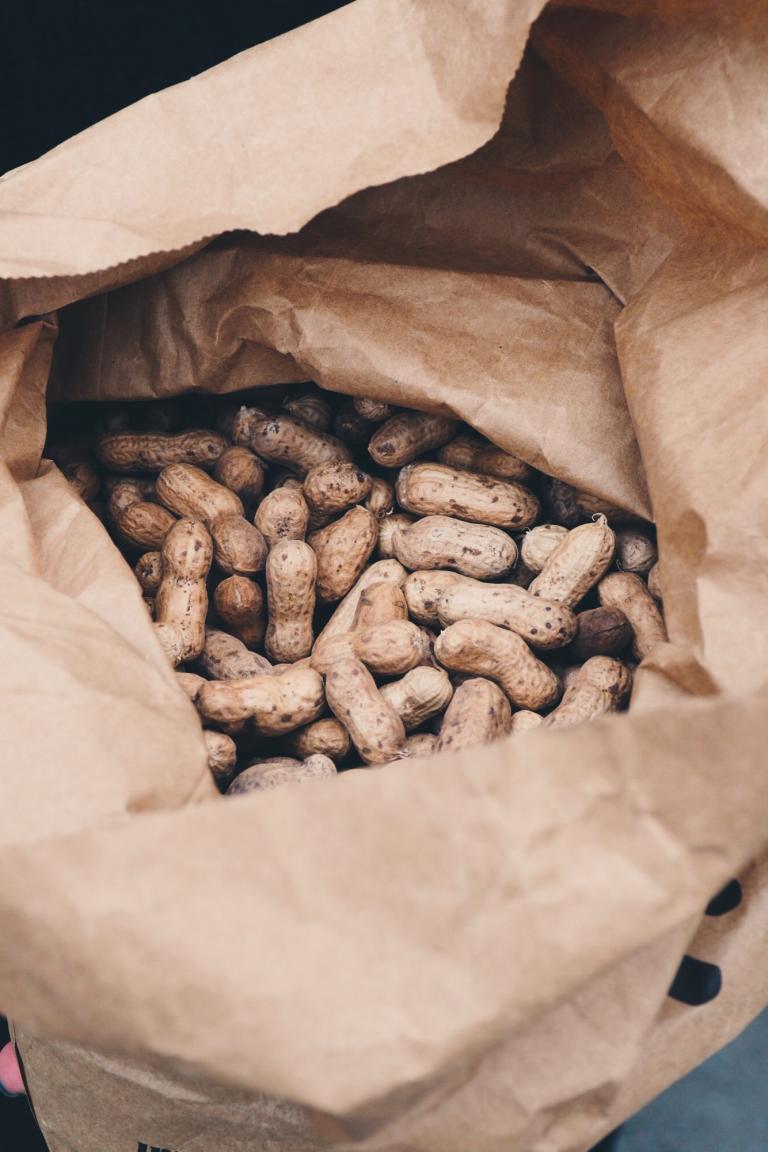As from 1 October 2021, companies importing Products of Animal Origin (POAO), Animal by-products (ABP), High-risk feed not of animal origin (HRFNAO) and certain Composite products from the EU will require pre-notification and relevant health documentation. Discover what changes, which products are impacted, what you can do to prepare, and how ECS can help you facing these challenges.
- What changes when you are exporting and importing animals, products of animal origin (POAO), animal by-products (ABP), high-risk feed not of animal origin (HRFNAO) and certain composite products from the EU to the UK?
- Why are these extra steps needed?
- What can you do to prepare if you are trading any of these categories?
- What are those product categories?
- Glossary of requirements and process steps
- Useful links
What changes when importing to the UK?
1. Health Certificate (EHC) needs to be created
- WHO: by the EU exporter
- WHEN: according to the guideline of the relevant EU Member State
- HOW: according to the guideline of the UK government (useful links can be found at the end). The certification of products is to be done at your production/loading site before the goods are transported. A by the government appointed person will need to sign the correctly completed UK EHC in all circumstances.
2. Health Certificate (EHC) needs to accompany the shipment
- WHO: by the EU exporter
- WHEN: at loading
- HOW: the original certificate must be placed inside the container or trailer and an electronic copy needs to be send to the UK importer
3. The shipment needs to be pre-notified
- WHO: by the UK importer
- WHEN: 24 hrs before the shipment is due to arrive (when coming from an EU/EEA country)
- HOW: electronic import pre-notification of the EHC in IPAFFS (this replaces the EU TRACES system)
4. UK Government checks the shipment
- WHO: DEFRA department (Department for Environment Food and Rural Affairs)
- HOW: documentary check of the EHC (remote) and/or physical check if needed at point of destination
Why are these extra steps needed?
The next Brexit phase introduces a number of new Sanitary and Phytosanitary (SPS) requirements. SPS requirements are measures to protect humans, animals and plants from diseases, pests, or contaminants. These measures are incorporated into the legislation, and maintain traceability, safety and standards in the food chain. The measures comprise a wide array of controls, for example regulation, certification and inspection.
What can you do to prepare if you are trading any of these categories?
1. Check your commodity codes (HS codes) to verify the exact measures that (will) apply:
- Use this tool to look up your commodity code, click on the ‘Import’ tab and click on ‘import controls’ to see whether specific controls apply
- Link to all commodity codes that require an action
- Let us know if we can assist you in deciphering which import controls apply, and what this means in human language.
2. Register with the relevant UK government systems for the pre-notification (IPAFFS):
- Find more information and how to register on IPAFFS
3. Adapt your processes and make the necessary agreements between exporter, importer and logistics partners:
- Let us help you adapt the processes to ensure a smooth transition into the next Brexit phase
- Our team of Brexit specialists can advise you and the way forward based on your commodity codes
4. Prepare the completion of health certificates:
- Click here to find all relevant model certificates. Attention, part 1 is to be completed fully and while in part 2 you can scrap what is not applicable
What are those product categories?
Products of Animal Origin (POAO), Animal by-products (ABP), High-risk feed not of animal origin (HRFNAO) and Composite products
POAO
POAO are Products of Animal Origin for human consumption. This includes the following food and drink groups:
- meat, including fresh meat, meat products, minced meat, meat preparations, poultry meat, rabbit, farmed game meat and wild game meat
- eggs and egg products
- milk and milk products
- honey
- gelatine and gelatine products
Certain POAO fall under safeguard measures. Those products already require a health certificate (EHC) and pre-notification in IPAFFS from 1 January 2021.
Products of animal origin not for human consumption are listed in the next category, Animal by-products (ABP).

ABP
ABP are animal by-products. ABP are in either high-risk or low-risk categories. As we do not transport category 1 and 2 ABP (carcasses, body parts, diseased animals), we will focus on category 3 ABP. A common example of category 3 ABP is pet food.
Category 3 ABP are classified as low-risk, and include:
- carcasses or body parts passed fit for humans to eat, at a slaughterhouse
- products or foods of animal origin originally meant for human consumption but withdrawn for commercial reasons, not because it’s unfit to eat
- domestic catering waste
- shells from shellfish with soft tissue
- eggs, egg by-products, hatchery by-products and eggshells
- aquatic animals, aquatic and terrestrial invertebrates
- hides and skins from slaughterhouses
- animal hides, skins, hooves, feathers, wool, horns, and hair that had no signs of infectious disease at death
- processed animal proteins (PAP)
PAP are animal proteins processed from any category 3 ABP except:
- milk, colostrum or products derived from them
- eggs and egg products, including eggshells
- gelatine
- collagen
- hydrolysed proteins
- dicalcium phosphate and tricalcium phosphate of animal origin
- blood products (although any processed blood would still be subject to this guide)

HRFNAO
HRFNAO are High risk food or feed not of animal origin. They are considered high-risk because they pose health risks associated with the country of origin.
There is currently no HRFNAO being imported into the UK from within the EU. Non-EU HRFNAO imported into the EU and subsequently exported to the UK will need to follow the additional steps as outline above. Non-EU HRFNAO that has not been imported into the EU, but is merely transiting already requires a health certificate and pre-notification as from 1 January 2021.
Products may be considered high risk if they contain for example:
- contaminants - mycotoxins and aflatoxins
- pesticides
- Salmonella
Examples of HRFNAO include:
- groundnuts such as peanuts in shell from Bolivia or Madagascar
- dried grapes (raisins) from Turkey
- herbs such as coriander and basil from Vietnam
Full list of products under restrictions can be found here.

Composite products
A composite product is defined as foodstuff intended for human consumption that contains both processed products of animal origin and products of plant origin, where the processing of the primary product is essential to the production of the final foodstuff.
Several rules apply to composite products, to determine which SPS requirements apply:
- If the composite product includes any meat product, it will be subject to the same rules as POAO.
- If the composite product contains half or more processed dairy product, egg product or fishery product, it will be subject to the same rules as POAO.
- If the composite product contains only honey as the animal origin product, it will not be considered as a composite.
- To be exempt from veterinary checks, composite products must contain less than half of their substance of any processed product of animal origin (POAO) other than meat products and be:
- shelf-stable at ambient temperature or have clearly undergone in their manufacture a complete cooking or heat treatment process throughout their substance, so that any raw product is denatured;
- clearly identified as intended for human consumption;
- securely packaged or sealed in clean containers;
- accompanied by a commercial document and labelled in an official language of a Member State, so that document and labelling together give information on the nature, quantity and number of packages of the composite products.
Some composite products and foodstuffs which are not subject to veterinary checks include:
- confectionery (including sweets) and chocolate, containing less than 50% of processed dairy and egg products
- pasta and noodles not mixed or filled with processed meat product; containing less than 50% of processed dairy and egg products
- bread, cakes, biscuits, waffles and wafers, rusks, toasted bread and similar toasted products that contain less than 20% of processed dairy and egg products
- olives stuffed with fish
- soup stocks and flavourings packaged for the final consumer, that contain less than 50% of fish oils, fish powders or fish extracts
- food supplements packaged for the final consumer, that contain small amounts (in total less than 20%) of processed animal products other than meat products
The regulations around composite products can be found here

Glossary of requirements and process steps
Import pre-notification
An import pre-notification refers to the means by which importers provide advance notice to relevant regulatory bodies of a consignment’s arrival into GB or EU. This is typically a standardized import notification form that requires the importer to provide details regarding the consignment, such as the consignment’s country of origin, place of destination, the specific species/product and general details for the importer, exporter and transporter. This is submitted by the importer in advance of the consignment’s arrival to the relevant regulatory body for that commodity. For import into the UK, the import pre-notification is to be done in IPAFFS.
Health Certificate
A health certificate refers to an official document that confirms the product meets the health requirements of the destination country. This is required to accompany the consignment during its passage. It is the responsibility of the exporter to secure this from the country of origin’s relevant competent authority. Different products will require different details from the exporter regarding the consignment, though this will generally include details of the country of origin, place of destination, and nature of transport, as well as a health attestation of the consignment. For live animals and most products of animal origin, for instance, this will require the consignment to be inspected by an Official Veterinarian in order to verify that the consignment’s contents meet the health requirements of the destination country. An individual health certificate is required for each species/type of product/destination. Therefore, a single import may consist of multiple consignments that each require a health certificate.
Documentary check
A documentary check is an examination of official certifications, attestations and other commercial documents that are required to accompany a consignment.
Identity check
An identity check entails the visual inspection of a consignment in order to verify its content and labelling corresponds to the information provided in accompanying documentation.
Physical check
A physical check entails a check on the goods to verify that they are compliant with the sanitary and phytosanitary import requirements for GB. This includes, as appropriate, checks on the health of the animals, the consignment’s packaging, means of transport and labelling. Temperature sampling for analysis, laboratory testing or diagnosis may also be required.
Useful links
- Check your commodity code
- List of animal products subject to controls
- General guidance from UK Government for animals, ABP, POAO and HRFNAO
- Find out what documents you need for your animal, POAO, ABP or HRFNAO
- Guidance on how to complete a health certificate for imports to the UK
- Defra advise on specific products for human consumption
- Certain animals and animal products must have an additional import licence or authorisation for import
- ABP categories
- Using the IPAFFS system
- Guidance and regulation
- There are specific rules around composite products, which can be found here and here
